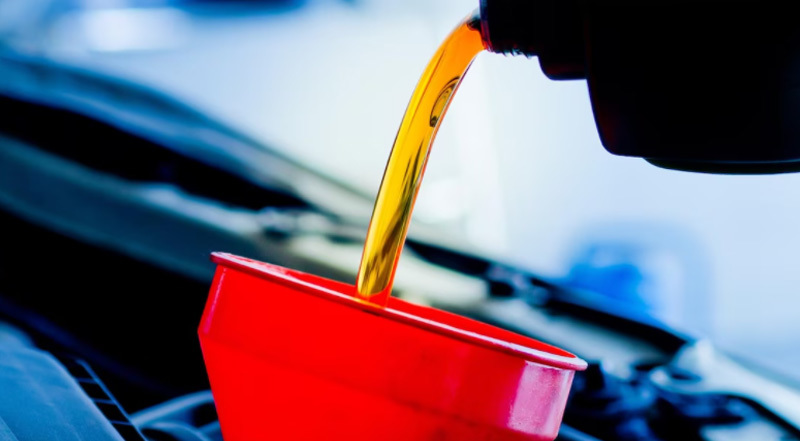
Xie Zhenhua: Four challenges of methanol as a substitute for vehicle fuel
Release time:
2019-08-12
On April 26-27, 2011, the 2011 (8th) China Automotive Engine Summit was successfully held in Shanghai. This seminar was sponsored by the China Automotive Technology Research Center and Shanghai International Automobile City (Group) Co., Ltd., hosted by the China Automotive Industry Information Network, and strongly supported by Shanghai International Automobile City Development Service Co., Ltd., Kunming Yunnei Power Co., Ltd., and Sensata Electronic Technology (Shanghai) Co., Ltd. The seminar continued to focus on the permanent theme of "technology leading development", and the annual theme was "green and efficient". The following is a speech by Xie Zhenhua, senior engineer of Huayi Group Shanghai Coking Co., Ltd. Moderator: Thank Mr. Zhu for his wonderful report. Now let's welcome Mr. Xie Zhenhua, senior engineer of Huayi Group Shanghai Coking Co., Ltd., to give a speech. The topic of his speech is the technical characteristics of methanol fuel power and the challenges of industrial application.
On April 26-27, 2011, the 2011 (8th) China Automotive Engine Summit was successfully held in Shanghai. This seminar was sponsored by the China Automotive Technology Research Center and Shanghai International Automobile City (Group) Co., Ltd., hosted by the China Automotive Industry Information Network, and strongly supported by Shanghai International Automobile City Development Service Co., Ltd., Kunming Yunnei Power Co., Ltd., and Sensata Electronic Technology (Shanghai) Co., Ltd. The seminar continued to focus on the permanent theme of "technology leading development", and the annual theme was "green and efficient". The following is a speech by Xie Zhenhua, senior engineer of Huayi Group Shanghai Coking Co., Ltd.
Moderator: Thank Mr. Zhu for his wonderful report. Now let's welcome Mr. Xie Zhenhua, senior engineer of Huayi Group Shanghai Coking Co., Ltd., to give a speech. The topic of his speech is the technical characteristics of methanol fuel power and the challenges of industrial application.
Xie Zhenhua: The meeting gave me a topic, which is divided into two parts. One is the technical characteristics, the other is the problem of industrial application. I think all of you here are experts of relevant engines. I will not discuss many problems. The situation of Chinese oil and the significance of alternative energy, Secretary General Wei has said a lot. Now, in terms of alternative energy, we think methanol is still promising. First of all, its capacity has reached more than 38 million tons since last year's research. If alternative oil can reach the level of 10 million tons of alternative energy, it may be the first to achieve the largest share compared with other alternative energy. At the same time, from the perspective of national policy, two standard countries have been introduced. From the perspective of industry orientation, It is also an alternative to methanol as vehicle fuel.
Now let's make a report on our work in recent years. From the perspective of our research content, we mainly focus on the mixing of methanol and gasoline, and the application of pure methanol in engines. Among them, the pure methanol M100 is basically pure 100. The car is driven with pure methanol. Now this car has been developed and Huapu can be mass produced. In December last year, the Ministry of Industry and Information Technology, after investigating Shanghai, Shanxi and Shaanxi, decided to carry out the demonstration operation project of methanol vehicles in two provinces and one city. This year, the demonstration will be started in June as planned, and preparations are currently being made.
During the whole process of development with Huapu Automobile, we cooperated in the research of fuel, improved the corrosion of methanol fuel and the applicability of lubrication, and made technical research and development on how the methanol injection system matched with the vehicle. From the perspective of technical characteristics of methanol fuel, we know that as a vehicle fuel, we can use coal to produce methanol and natural gas to produce methanol from the perspective of resources. At present, these two raw materials are the most used in production. In fact, methanol can also be produced by biotechnology. If it can be realized in the future, it can also become renewable energy. The resources are much richer than coal and oil, so the price of methanol is also much cheaper than oil. It can be expected that the price of oil and coal will rise in the future. However, due to the limitation of these two resources and the speed of price rise, I think methanol will rise more slowly than oil. Indeed, the first is the resources themselves, and the second is the economy. Due to the support of resources and the convenience of our use, under the existing price system, the price gap between methanol and petroleum products is still large. Third, its emissions. Since the use of methanol in the United States in the 1960s and 1970s, they have developed and studied that the emission of methanol is better than that of petroleum, so methanol is determined to be a clean energy. We will further elaborate on this. Fourth, the convenience of use. Methanol is a liquid fuel at normal temperature. Methanol can be used in existing gas stations. If a certain oil product exits, it can be used. These are the advantages of using methanol.
(PPT) In this table, I give a comparison between methanol and gasoline fuel. From the perspective of quality, nearly half of methanol is oxygen, and it is an oxygen-containing raw material. Theoretically, as long as 6.4, gasoline 14.6, and less than half of it. The amount of air added as oxygen-containing raw material to help combustion can be significantly reduced, so the nitrogen in the air is also significantly reduced, and the total amount of exhaust gas is reduced, The heat carried away by nitrogen must also be reduced. I have made a rough estimate that there is a 4% to 6% increase in thermal efficiency in this area. At the same time, the octane number of methanol is relatively high, which is higher than that of existing oil products. Its theoretical compression ratio of engine can reach more than 14 points, which is also relatively high. The improvement of compression ratio can also greatly improve the efficiency of engine. The actual application of engine data later shows this problem. Of course, it has some disadvantages. Its calorific value is relatively low, and the result of low calorific value must have a replacement process in use, Make the calorific value of the mixture reach the same proportion as the feed oil.
This is the test data of the Huapu car. Compared with the two modes of using methanol and gasoline, the power of methanol is slightly higher than that of gasoline, which can also be reflected from the acceleration. In terms of the consumption of raw materials, the ratio of gasoline consumption to methanol consumption is less than 1.6. According to the fuel consumption per hundred kilometers, the ratio of gasoline consumption to methanol consumption is less than 1.6. As mentioned above, it needs 2.2 to be defined from the perspective of calorific value, and now it uses 1.6 to achieve the same effect, Therefore, the thermal efficiency of the engine has been improved a lot. From the perspective of energy saving, this area has also been improved by more than 20%.
From the perspective of emissions, this is the relevant figure. Its design is in accordance with European standards. Now, if methanol is used, 30%, its emissions index is also up to standard. In October 2008, Shanghai Coking and Professor Yao Chunde from the State Key Laboratory of Internal Combustion Engine of Tianjin University cooperated to carry out the application test of methanol diesel combined combustion technology. After nearly half a year of vehicle test, the refitted large diesel truck has actually operated for more than 20000 kilometers. The substitution of methanol for diesel has reached about 40%. This is the appearance of the car. The amount of modification work is not very large. After the road test, the Shanghai Municipal Science and Technology Commission gave us an appraisal. In the process of research and development cooperation of engine vehicles, we believe that compared with gasoline and diesel fuel, methanol fuel has poor lubricating performance, and the life of some components will have a certain impact. We also have lubricating additives in the middle of the fuel, and the weight of the additives is very small, so as to ensure that it does not affect the combustion power amplifier.
For methanol raw materials, we have done tests, for example, some in Ningbo methanol fuel and Urumqi methanol fuel. According to the analysis results, it can be judged that those methanol are basically not methanol synthesized by large coal chemical plants, but some waste methanol of small companies have been simply treated, with many impurities. Therefore, we have also made a basis for formulating our product standards, participating in the formulation of national standards and participating in the formulation of local policies in Shanghai, and have made provisions for the content of impurities. We produce more than 95.5% of the components of methanol, which may be higher than the content of this component. Impurities account for less. Unlike gasoline and diesel, which are mixed together, we can ensure its single combustion and combustion control is very perfect.
From the perspective of methanol fuel, impurity corrosion resistance and other aspects need to be limited. Everyone is worried about the corrosivity of methanol fuel. We do targeted work on engine parts. In the picture test, we can say that the corrosion of a single base material is very limited. In the middle of the industry and in the course of some of our standard work, we see that there are still some problems with the method of methanol corrosivity determination test. It often takes a long time to verify the corrosion. Therefore, the corrosion promoter is added to accelerate the corrosion, and then the added corrosion inhibitor is determined to be effective. This test method is worth discussing, because you add acid to accelerate the corrosion, So there are problems with this research method. The amount of quantitative corrosion of methanol to single or different metals is very low.
In general, the corrosion of methanol should be more serious than that of gasoline and diesel, but it is not as serious as that after adding accelerant. As long as some targeted measures are taken on the pump, I think the methanol corrosion problem is acceptable. There is also methanol corrosion on some seals, rubber and plastic parts. It is indeed a problem to take both targeted rubber and plastic materials into consideration. Through the work done, fluororubber can solve this problem.
So the problem is that if there is such a special engine and special vehicle, it can solve the problem of these seals at a low cost. If there is no seal production, I think it can be used if there is a small problem in some areas.
We have also tested the research and development of blended gasoline with SAIC Research Institute of Internal Combustion Engines, which is also based on the development of the complete set of engine vehicles. After that, M15 methanol gasoline can be used in vehicles. In the first half of last year, the technical work was almost completed, including engine and vehicle, as well as the screening of various additives. These have been completed, and the text has also been completed. Now it is in the review stage, and the understanding of methanol is still very different, The introduction of the standard still needs to do some research and conceptual work. With regard to the work done by these engine cars, we can say that we can still use the technology. The three specifications of engines installed in GM in the first half of last year were also tested completely, including the conclusion that the existing engines and existing vehicles are not very big problems. The answer to the question about the old car many years ago is that there will be some questions.
This is the situation of Santana engine we have made. The research content of M15. Our coking company has also undertaken 863 products of the Ministry of Science and Technology, including the projects of the Institute of Internal Combustion Engines.
From the perspective of methanol fuel performance, it can save energy and reduce emissions. In the use stage, it can completely achieve the effect of methanol fuel energy saving. According to the theoretical calorific value, the ratio of methanol to gasoline is about 2.2, the actual use substitution ratio is about 1.6:1, and the energy saving is 25% based on the equivalent calorific value.
Technical difficulties, we can conclude that it is difficult to start at low temperature and exhaust emissions. For gasoline vehicles, at the starting and warm-up stages, unconventional emissions also have the same difficulties. Material adaptability, corrosion and swelling of some metal and non-technical materials, and the difficulty of mixing methanol and gasoline is greater. In addition, the change of combustion behavior should also select more appropriate metal materials and structures, the lubrication system also needs to be optimized, and the development of system specifications, It needs engine manufacturers and vehicle manufacturers to participate in industrial research and development, and the current situation is still more refitted vehicles.
Regarding the challenge of industrialization, we should start from these three and four aspects.
Compared with gasoline, it is completely acceptable and safer than gasoline. Shanghai has been approved by the fire department at the stage of fire approval.
As for the toxicity of methanol, many people think that methanol is very toxic. In fact, the toxicity of methanol is completely different from that of ethanol from the perspective of data. As you all know, alcohol poisoning is also a lot every year. According to scientific theory, our country has several levels of occupational exposure services, high, moderate and mild hazards. From these data, according to the intake data of 50% of experimental animals killed by toxicity, methanol is the same as gasoline in light hazard. However, due to the occasional cases of acute poisoning, the 5044 national standard is in the middle of the category demonstration, and methanol is in the same level of moderate hazard as gasoline. It can be seen from this figure that 50% of the dead experimental animals are crossed by methanol and ethanol. In this respect, it is a grade. According to the data with higher toxicity, the experimental animal per kilogram of body weight is 5628 mg, which is more than 5 grams. According to this data, people who drink 75 kg of methanol may die at about 375 grams. According to the lower data of more than 7000 grams of ethanol, they may die at more than 400 grams, There are few people who drink two jin at 50 degrees. There is no case of contact or death of methanol in the safety accident of methanol, so the safety of methanol used as fuel need not be worried. According to Baidu's incomplete statistics from 1989 to 2009, a total of 1006 people were poisoned, 137 died, 41 were disabled and 5 were blind in 13 cases of counterfeit alcohol in the past 20 years. If ethanol is true or false, I think more than 7 people will die from poisoning. So the toxicity of methanol may be exaggerated in the propaganda. We really use methanol, or we will use methanol in the development and test of engines and fuels in the future. From this point of view, it is a little exaggerated.
Another point about its tail gas is that you can find the conventional and unconventional emissions on the Internet. For methanol fuel, it has emissions. There is no purifier in this data.
From the perspective of emissions, Tsinghua has specially done the 863 project, and Huapu's car is also entrusted to Shanghai Testing Center to repeatedly do the methanol emissions. The data shows that there is corresponding technical support, so there will be no problem of methanol emissions exceeding the standard.
I think the fourth challenge in terms of the industrialization of methanol fuel is normal. Now the Ministry of Industry and Information Technology understands that it is also actively supporting. From the perspective of the National Development and Reform Commission, further work needs to be done. At present, several major oil companies, monopoly status, and the common people are talking about a lot, but from the perspective of the stability and controllability of the government's fuel supply market, the government also has its own considerations, which is understandable.
I hope that we, including the experts present here, and the backbone of the industry, can make the market bigger, improve the technology, and expand the share. When it really becomes bigger, it will be natural.






